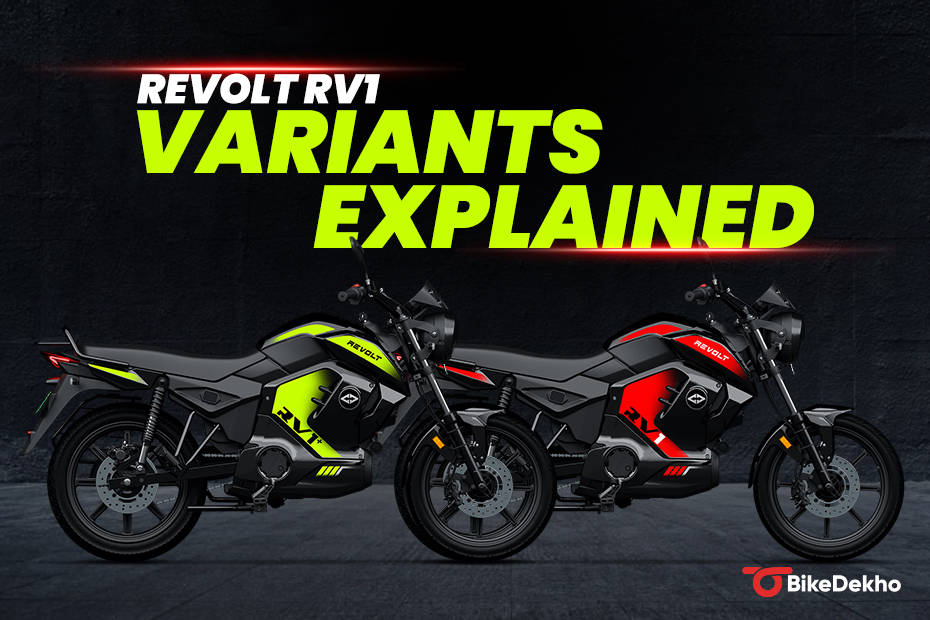New Revolt RV1: Variants Explained
Modified On Sep 18, 2024 04:44 PM By Sahilfor Revolt RV1
- 4183 Views
Launched at Rs 84,990 (ex-showroom), the RV1 is now the cheapest electric bike in the electric manufacturer’s line-up. It comes in 2 variants: RV1 standard and RV1+

Revolt Motors has launched its first-ever commuter electric bike, the RV1. With a price tag of Rs 84,990 (ex-showroom), the RV1 also became the most affordable bike in the EV manufacturer’s line-up. The bike gets 2 variants: RV1 standard and RV1+. Here are the details about what’s the same and how they differ:
What's the same?
The Revolt RV1 and RV1+ are available in four colour options: Cosmic Black Red, Titan Red Silver, Black Neon Green and Black Midnight Blue. Both bikes get the same mid-mounted electric motor which produces 2.8kW of peak power. They also have a top speed of 75kmph (claimed).

These electric bikes feature the same 6-inch LCD instrument cluster. It shows a speedometer, odometer, battery, range, clock and other telltale lights. The display also provides real-time ride data and error codes. Both RV1 and RV1+ are equipped with LED lights all around.
Both variants are suspended on a telescopic fork and twin rear shocks. Braking is handled by a 240mm front disc and a 240mm rear disc brake. The Revolt RV1 rides on 17-inch wheels, wrapped with a 90-section front and 110-section rear.
The RV1 and RV1+, both have a generous 180mm ground clearance and a 790mm seat height with a flat seat profile.

Revolt RV1 Standard
The Revolt RV1 is the more affordable variant that costs Rs 84,990 (ex-showroom). The RV1 is equipped with a smaller 2.2kWh lithium-ion battery pack that delivers a claimed range of 100km in the Eco mode. It charges from 0 to 80 percent in around 2 hours and 15 mins, using a standard charger. It has a smaller battery that makes it weigh 2kg less than the RV1+, at 108kg (kerb).
Revolt RV1+
The Revolt RV1+ is the premium variant which is priced on the higher side, at Rs 99,990 (ex-showroom). The electric bike comes with a bigger 3.24kWh lithium-ion battery pack that delivers a claimed range of 160km in Eco mode.

The RV1+ takes 3 hours and 30 minutes to charge from 0 to 80 percent using a standard charger. Whereas, the fast charger charges the bike from 0 to 100 percent in just 90 minutes. With a bigger battery pack, it weighs 2kg more than the RV1, at 110kg (kerb).
Conclusion:
Being a commuter-focused electric bike, the RV1 range has decent looks and features. The only significant difference between both variants is the battery capacity which results in different ranges. While the RV1 and RV1+ claim a range of 100km and 160km, respectively, they both will likely deliver a slightly less range than the claimed figures.

So, if your daily commutes require you to ride closer to your house, around 15- 20km, then you can go for the more affordable RV1. However, if your daily commutes require you to go beyond that then you should pick the RV1+, and it is the one we suggest as well. This way, you will be able to ride the bike for a few days on a single charge.
